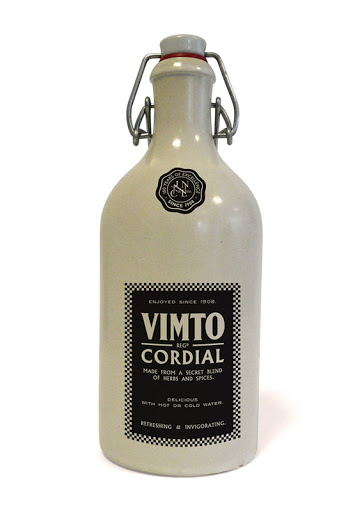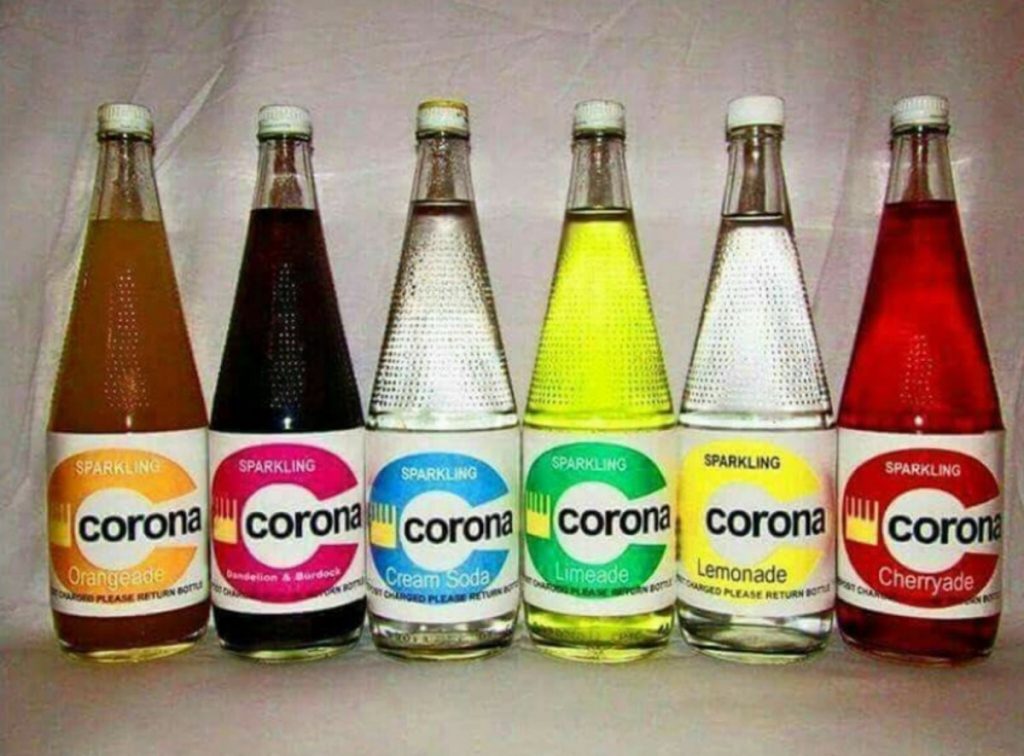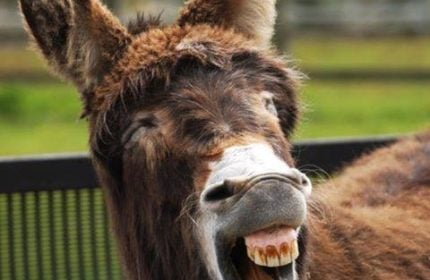Old-fashioned fizzy pop
In the 1760s Dr Joseph Priestly discovered how to artificially carbonate water. By 1833 carbonated water and lemon cordial was combined to make lemonade, and fizzy drinks really began to take off.
Here we look at some old favourites:
Vimto
 Developed in Manchester in 1908 by John Noel Nichols as a tonic restorative and originally sold under the name Vim Tonic. Vimto was made from a secret recipe of herbs, fruits and spices.
Developed in Manchester in 1908 by John Noel Nichols as a tonic restorative and originally sold under the name Vim Tonic. Vimto was made from a secret recipe of herbs, fruits and spices.
By the 1920s Vimto was carbonated and by the 1930s it was available in over thirty foreign countries around the globe.
Despite sugar rationing during the war years Vimto and its distinct taste survived and by the mid-1950s the company had moved to advertising Vimto on the new platform of television.
Vimto has experimented with different products over the decades but it’s success has been not to deviate from it’s one constant – its distinct secret recipe!
Dandelion and Burdock
Originally a type of light mead, Dandelion and Burdock over the years has evolved into the carbonated soft drink commercially available today. Traditionally it was made from fermented dandelion and burdock (a type of thistle) and was thought to have health benefits. The exact origin of Dandelion and Burdock are not known but it is believed to have been around since the 13th century.
Beer has been flavoured with a wealth of ingredients over time, including burdock and it is thought its unique taste was so popular that Temperance supporters may have been the catalyst for producing a non-alcoholic version, similar to how ‘root beer’ became an acceptable Prohibition drink in the USA.
Dandelion and Burdock has enjoyed a renaissance of late and can now be found as flavourings in artisan cakes and biscuits.
Ginger Beer
 Ginger Beer first brewed in Yorkshire England in the mid-1700s. It was made mixing ginger, sugar, water and either lemon or cream of tartar together leaving it to sit and ferment.
Ginger Beer first brewed in Yorkshire England in the mid-1700s. It was made mixing ginger, sugar, water and either lemon or cream of tartar together leaving it to sit and ferment.
It was very popular and was exported to all over the British Empire. The original ginger beer was mildly alcoholic, and The British Excise Regulations of 1855 required that the drink contained no more than 2% alcohol. It was usually far less potent and so ginger beer became popular with children.
By the start of the 20th century ginger beer was produced commercially in almost every town in the UK and by 1935 there were more than 3000 UK producers.
Modern ginger beer is carbonated, not fermented, making it a soft drink.
Did you drink these as a child or something else? We’d love to hear your memories of these old-fashioned fizzy drinks.
Melina - Assistant Editor
Latest posts by Melina - Assistant Editor (see all)
- Asparagus and garlic prawn spaghetti - May 4, 2024
- Cream Cheese Orange Bars - May 2, 2024
- Top tips for hay fever sufferers - April 14, 2024
- Paysan Breton Cream Cheese Breakfast Wraps - April 12, 2024
- 4 Homemade Sweet Treats for Easter - March 24, 2024





















